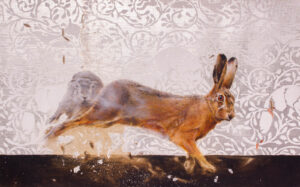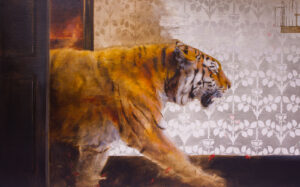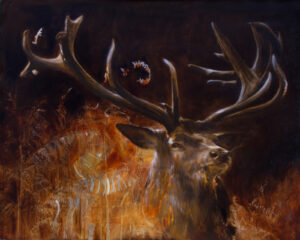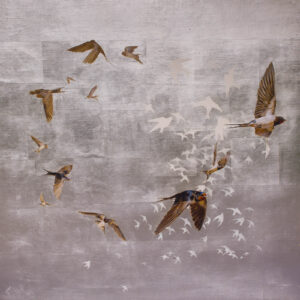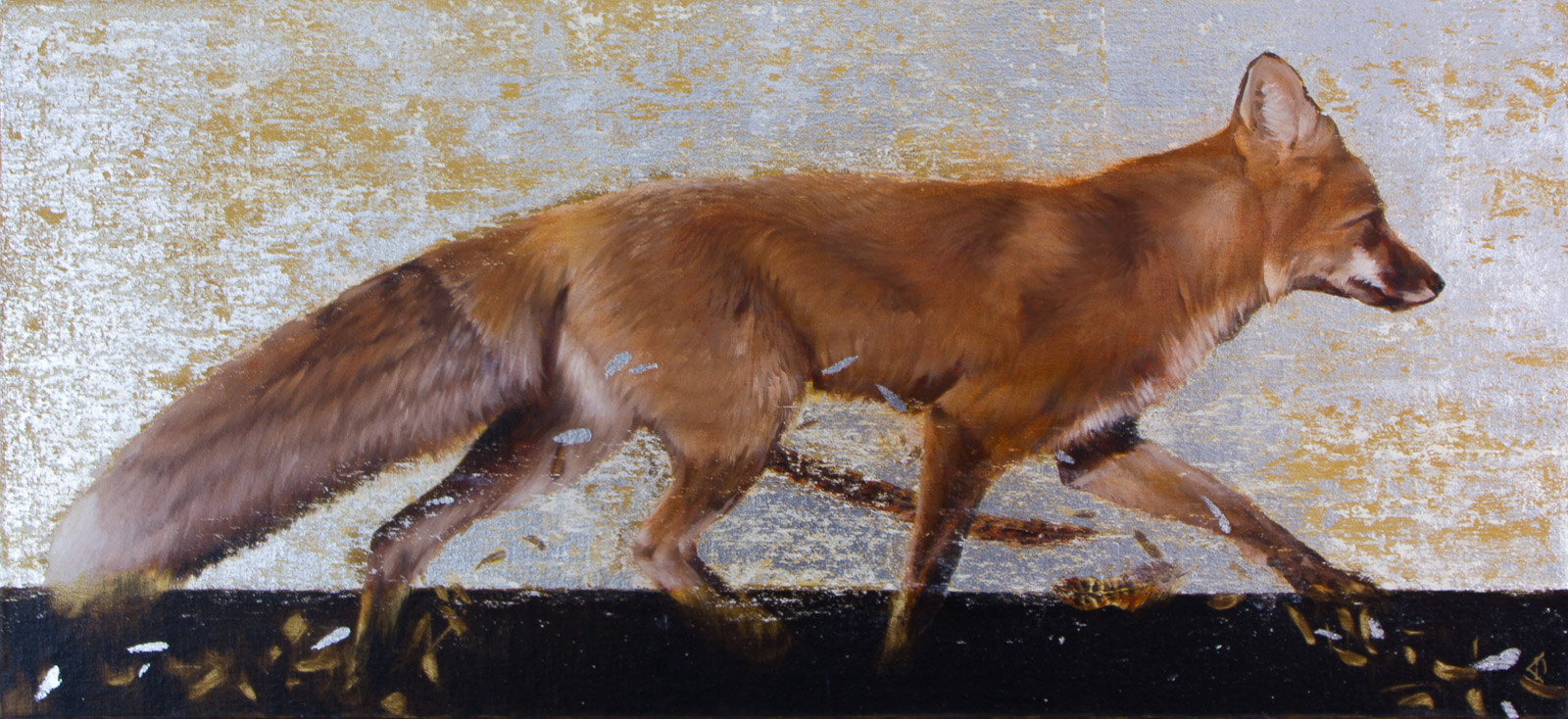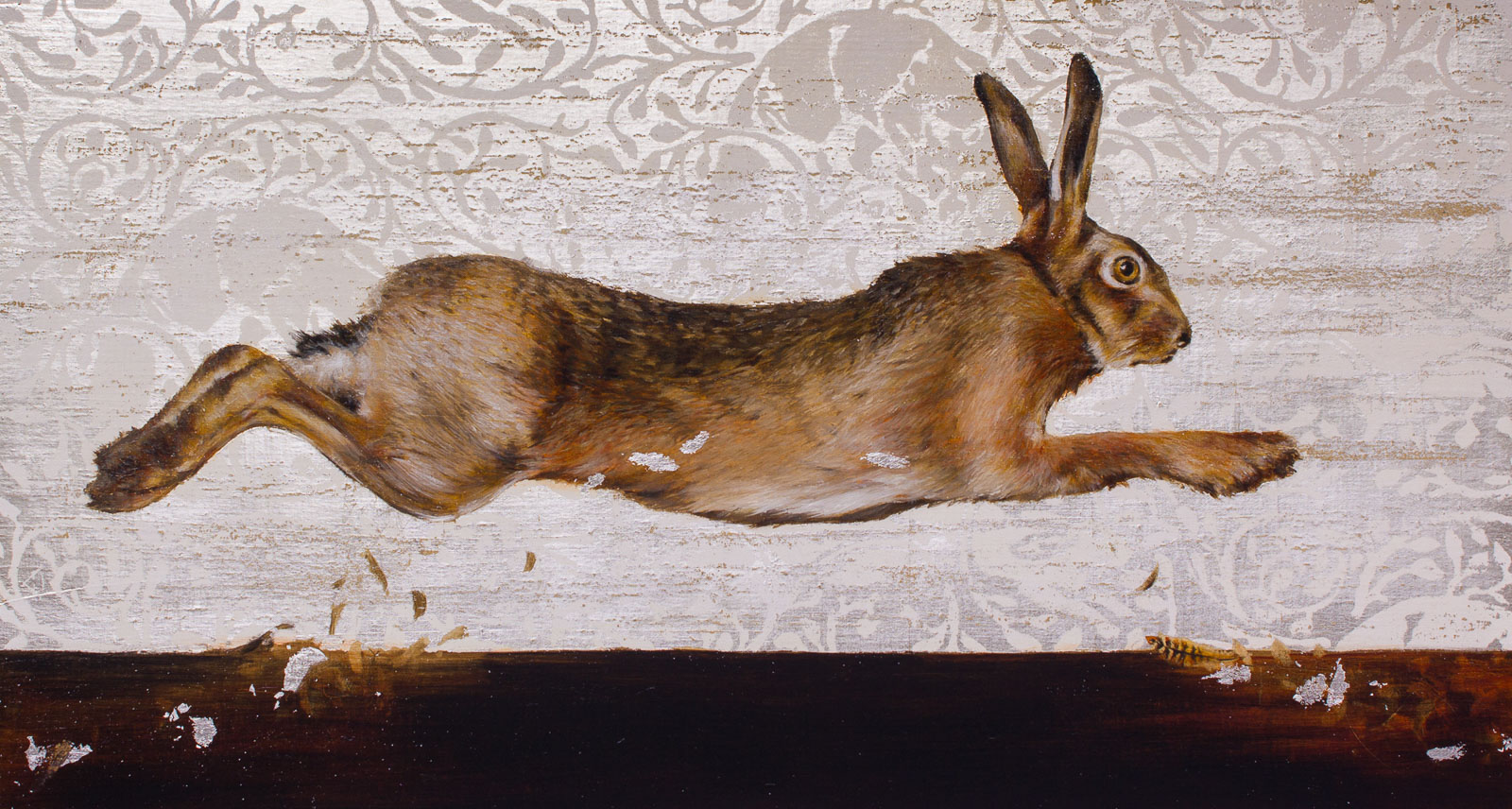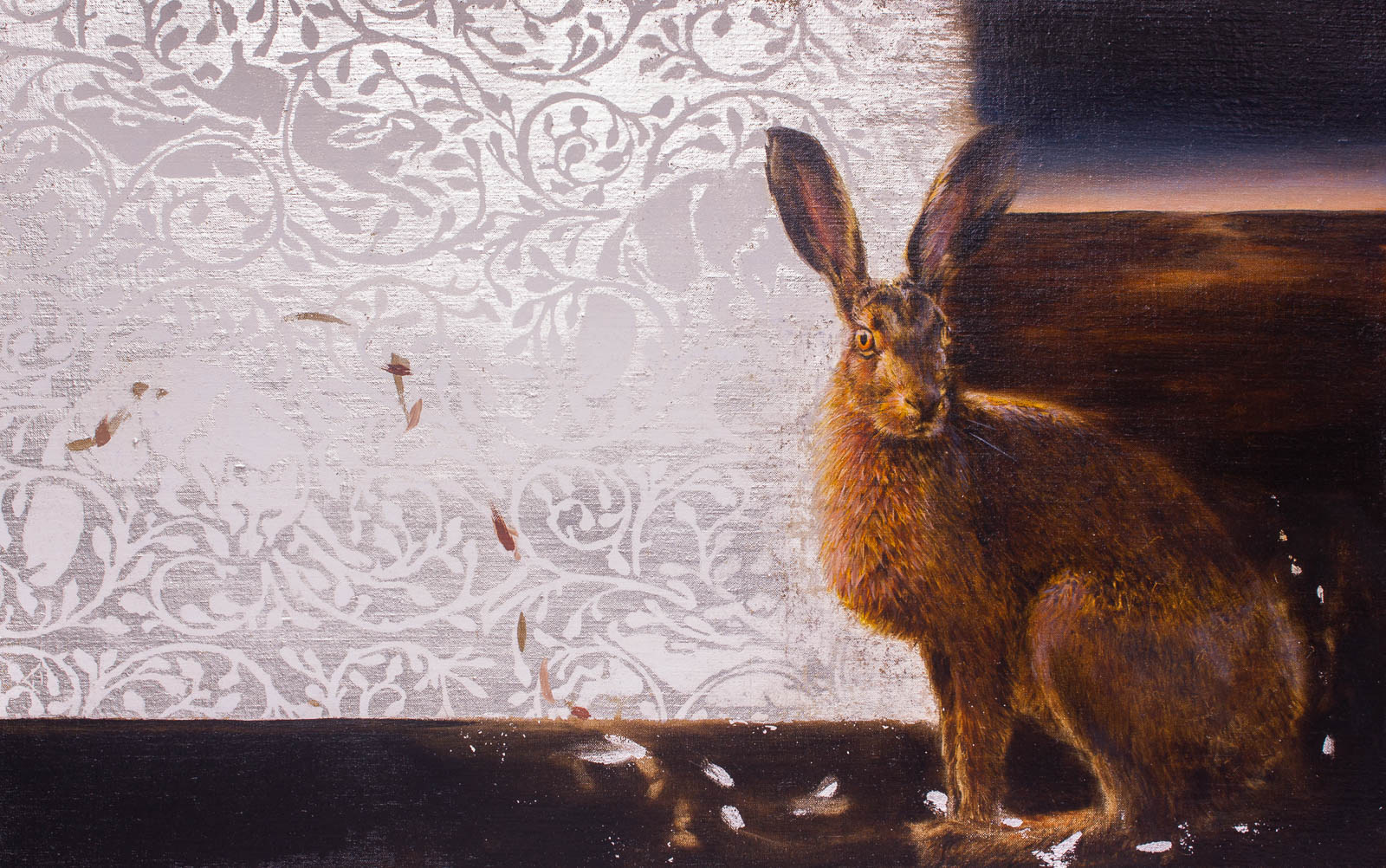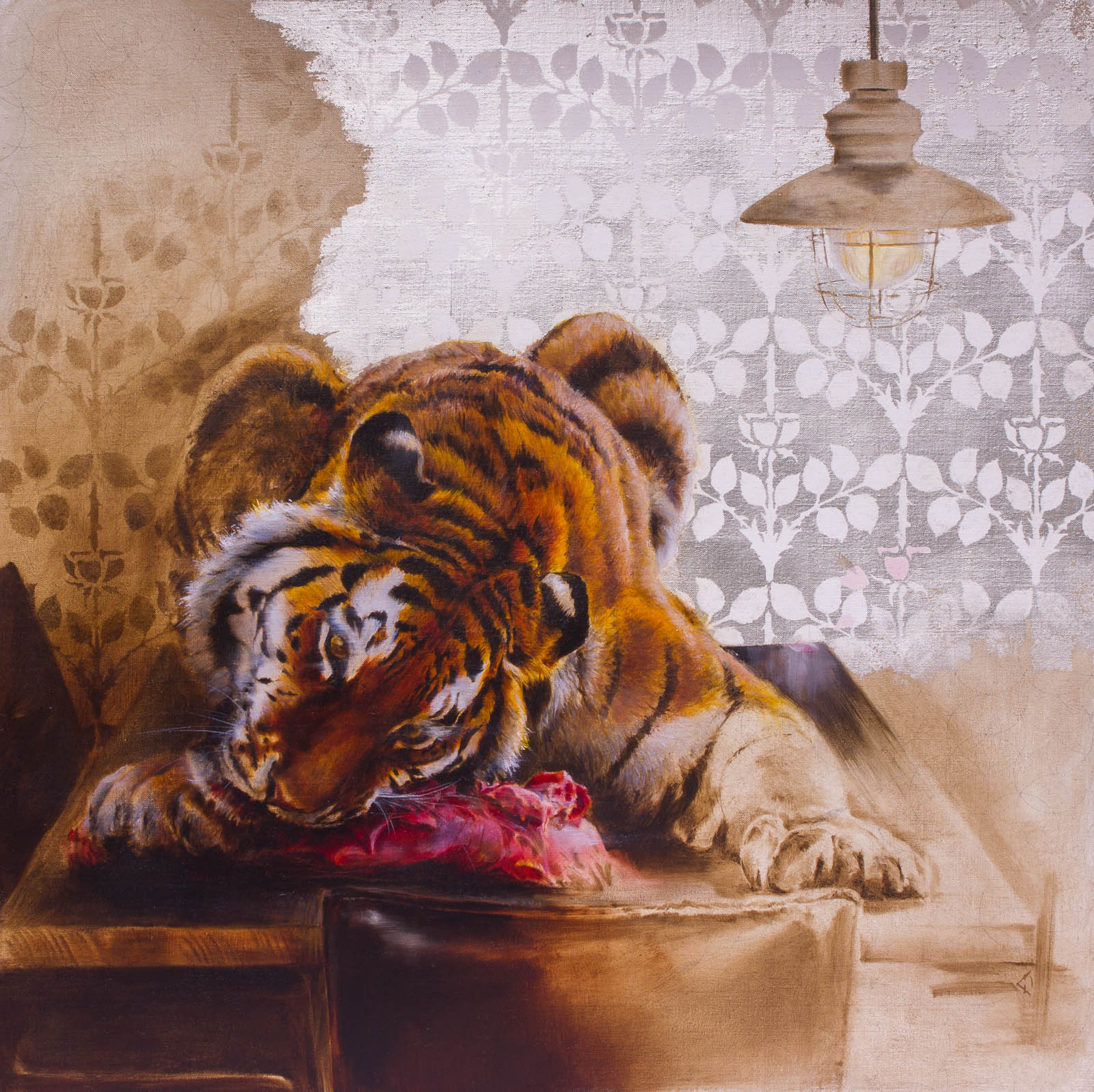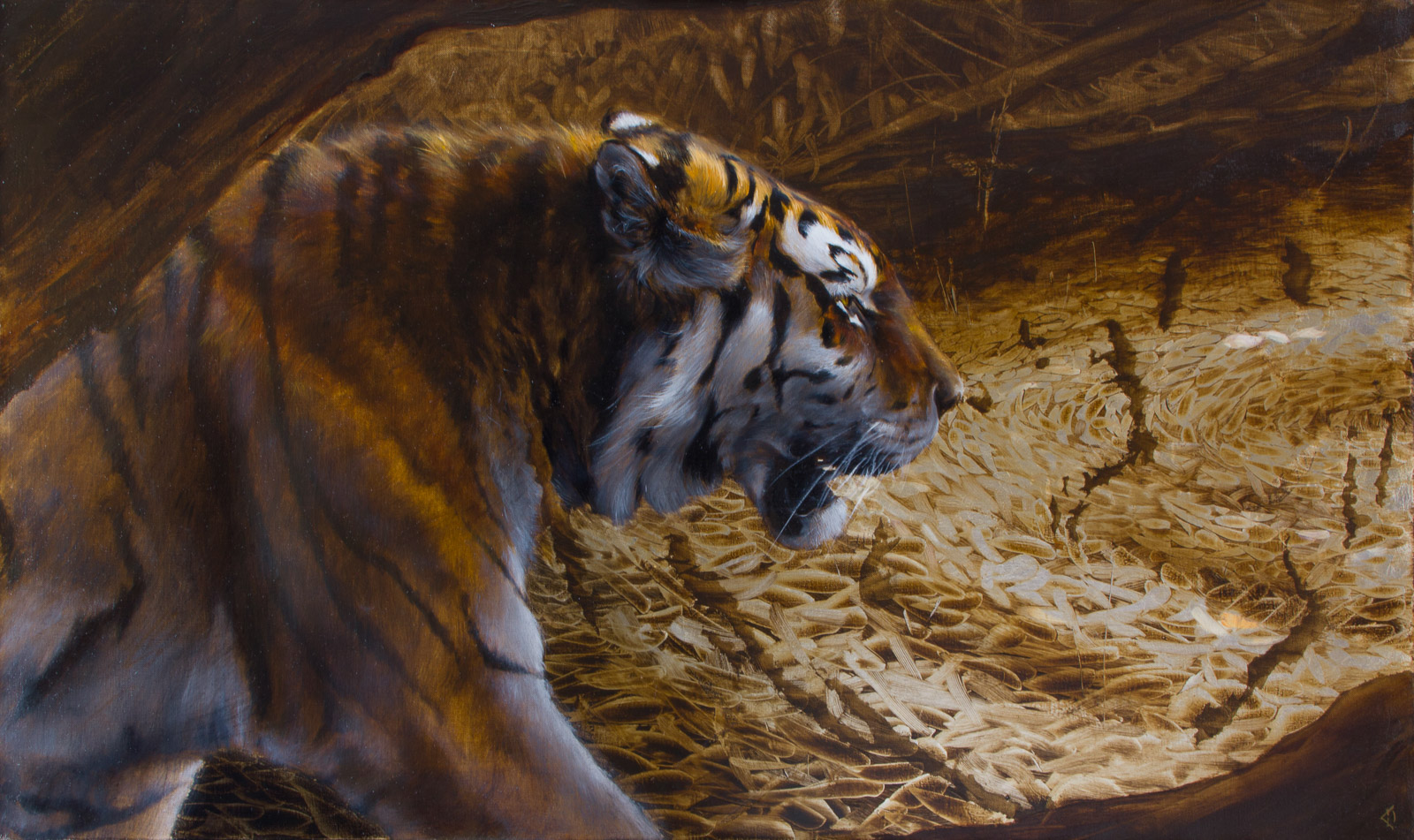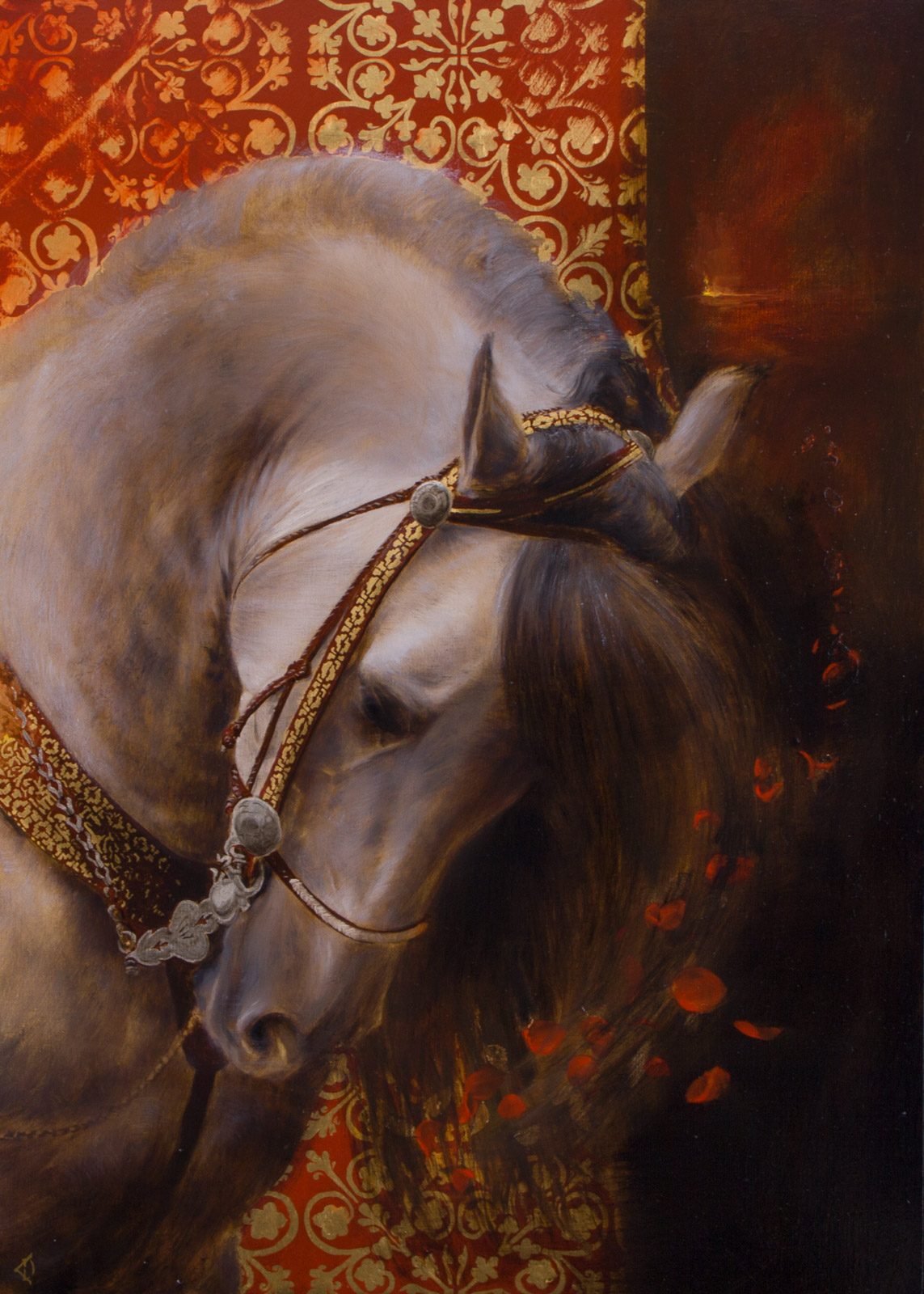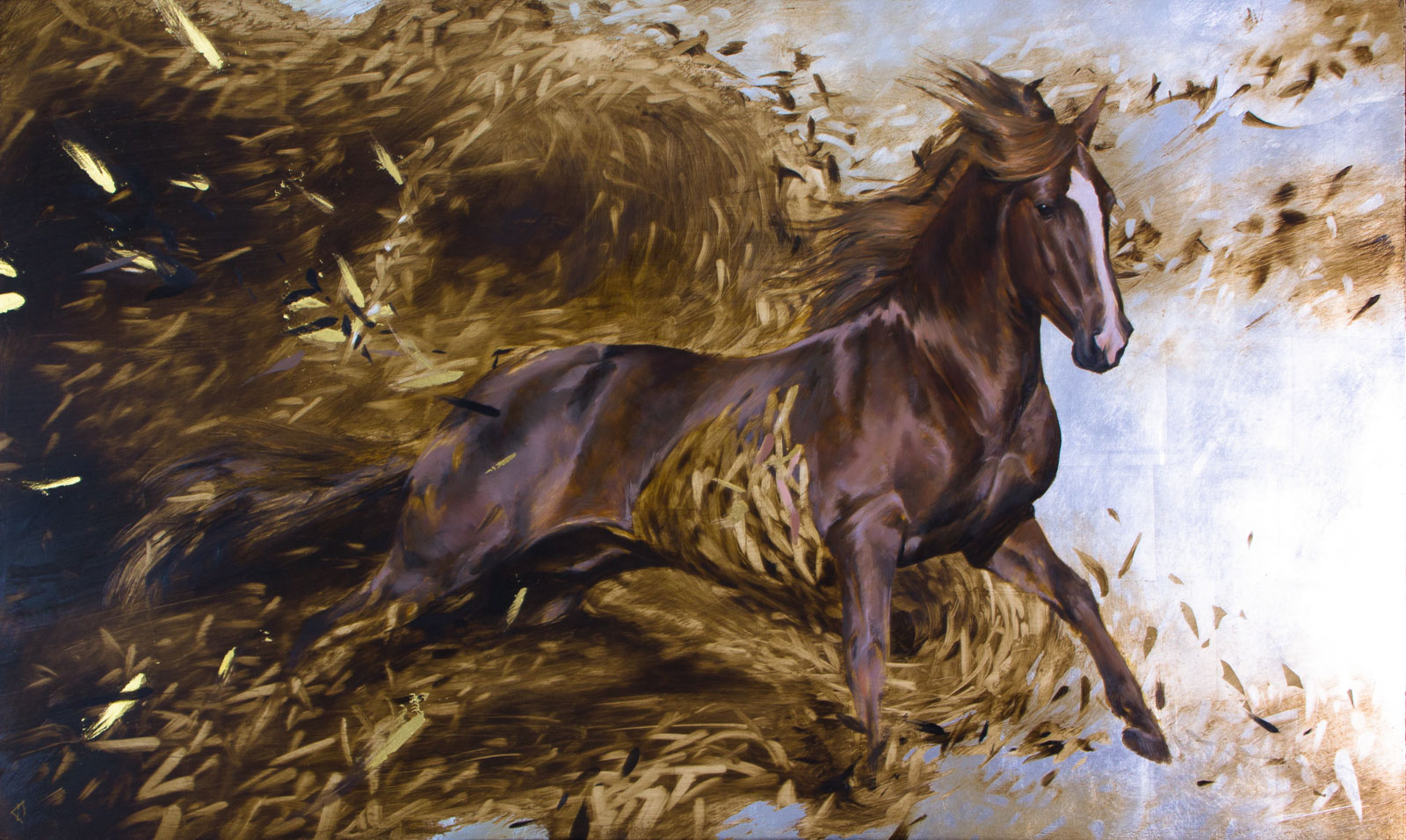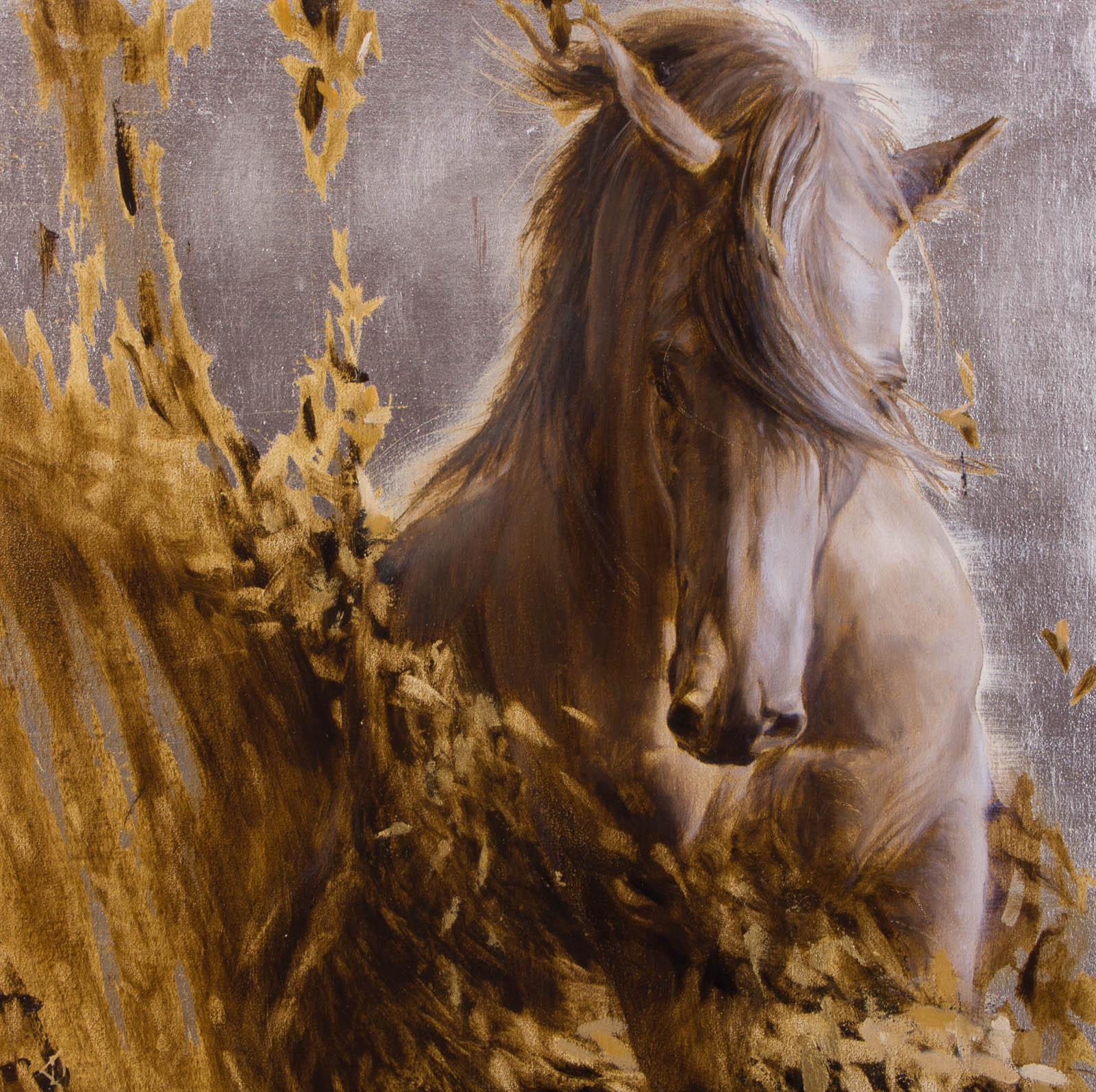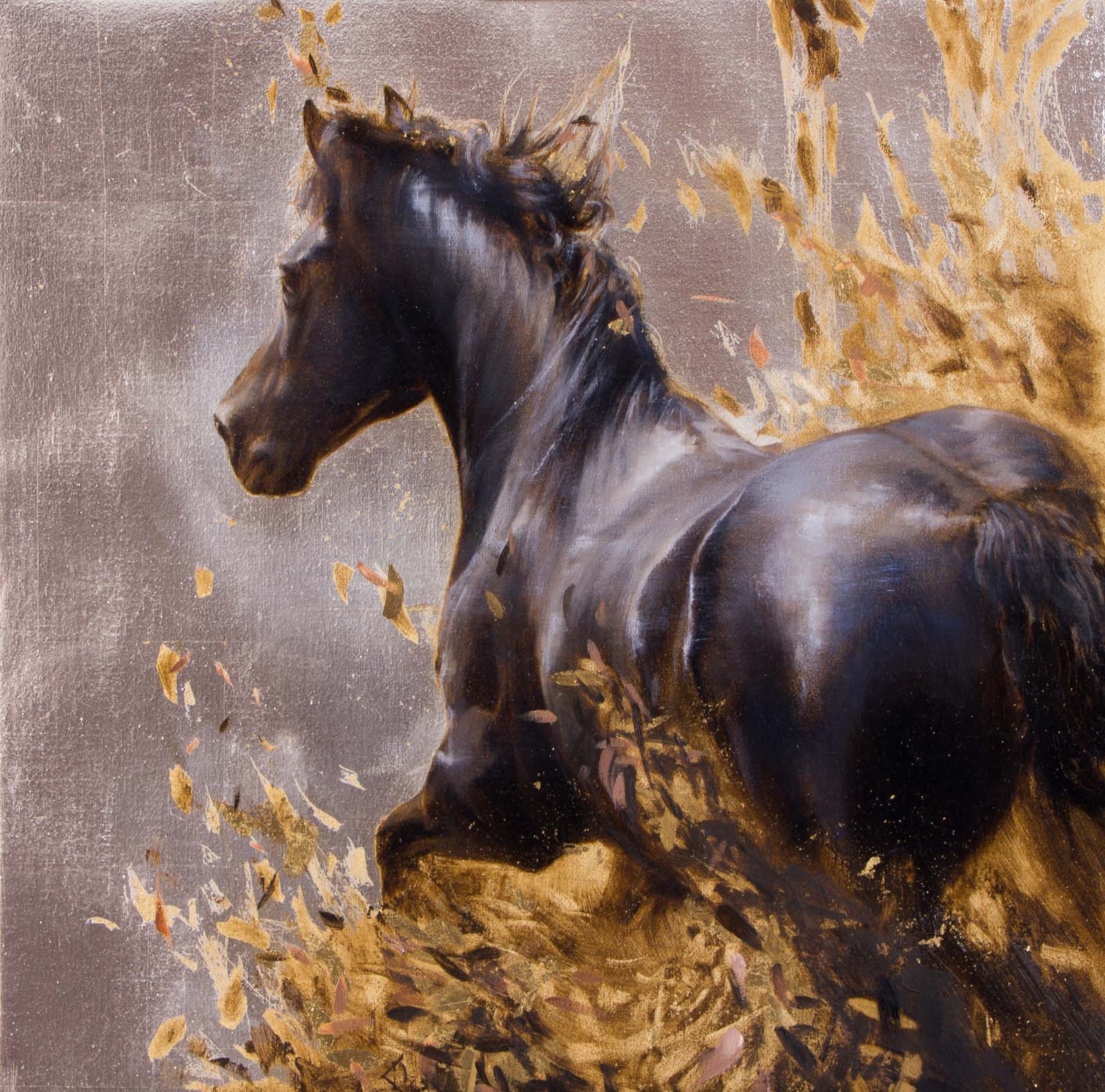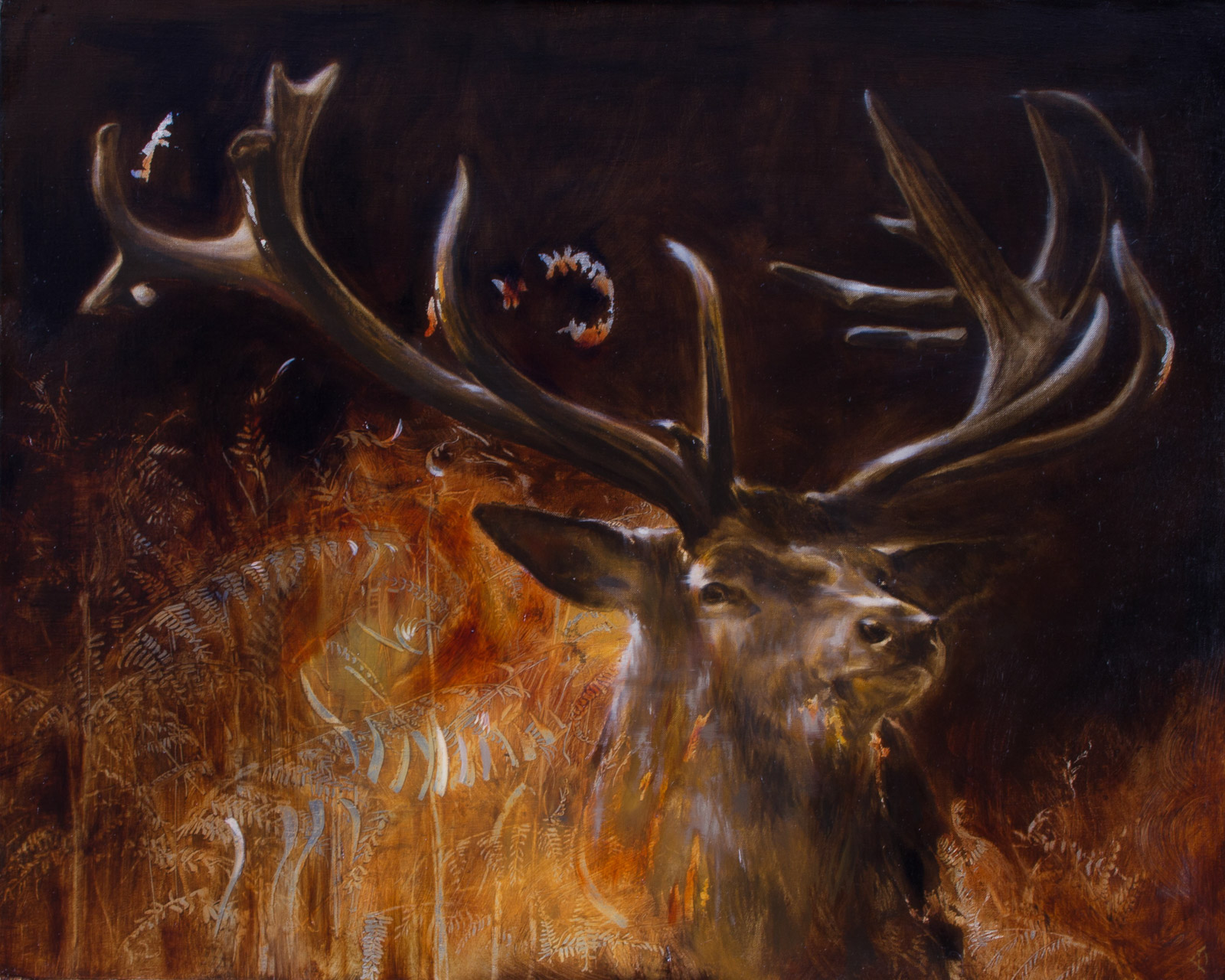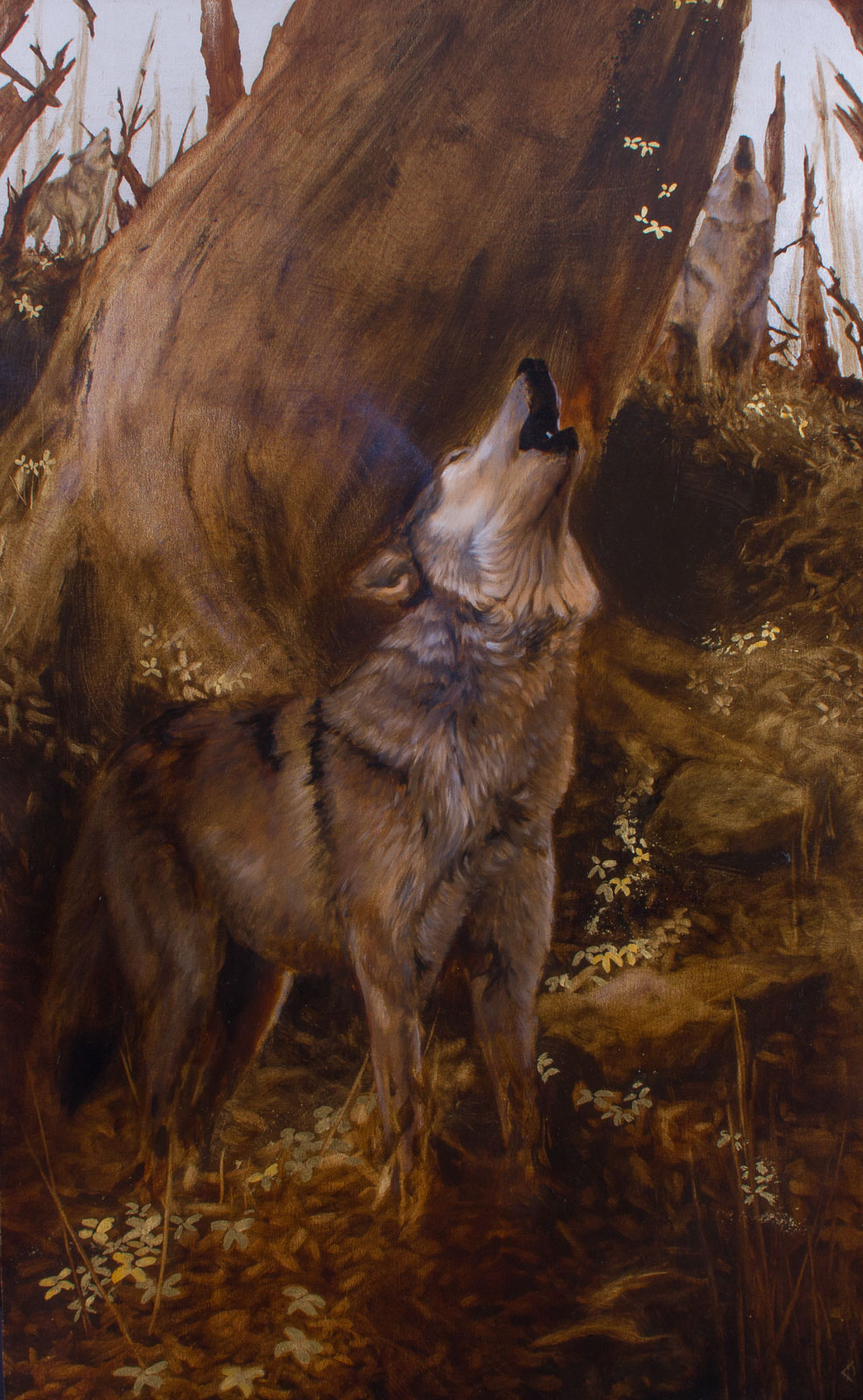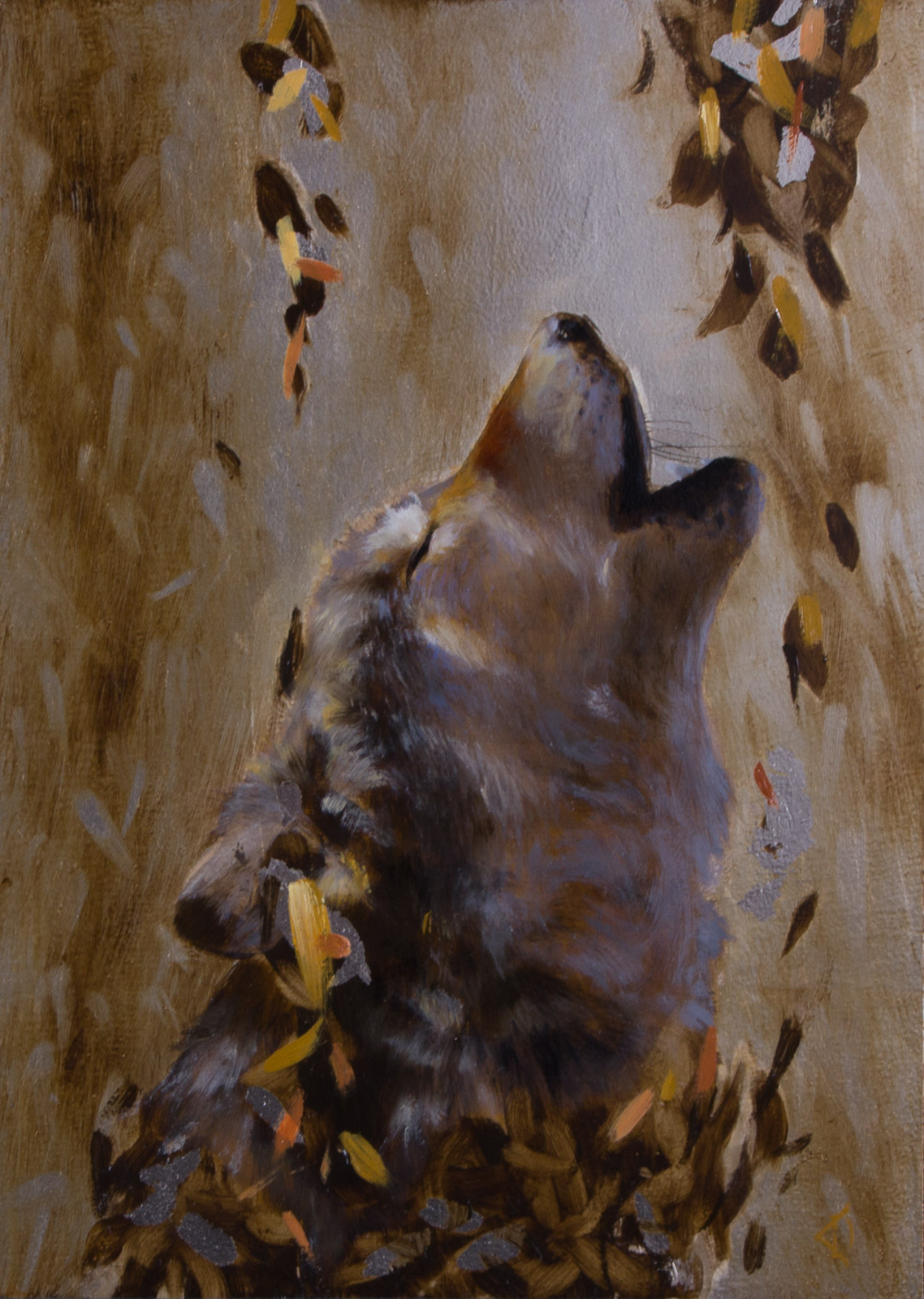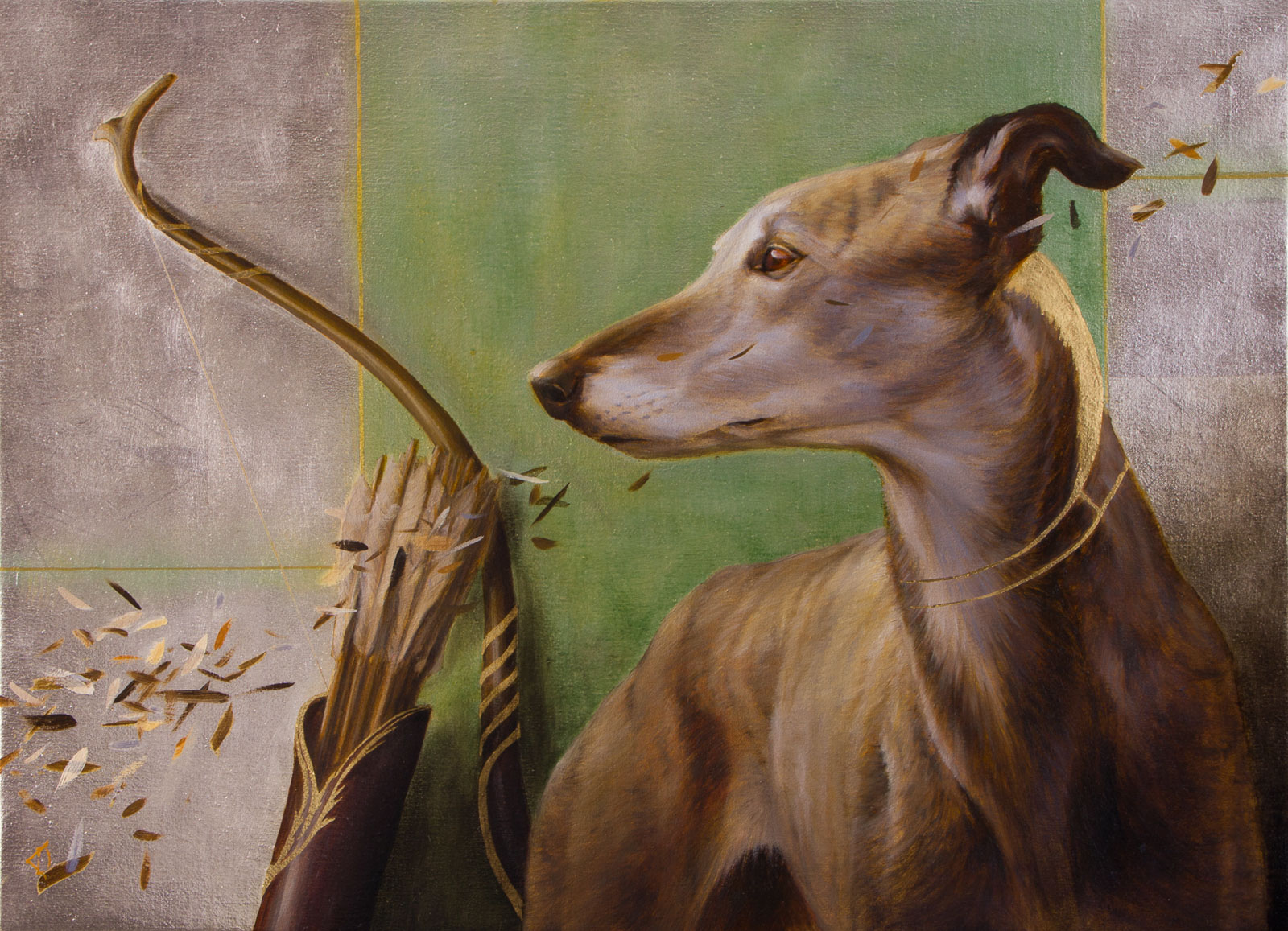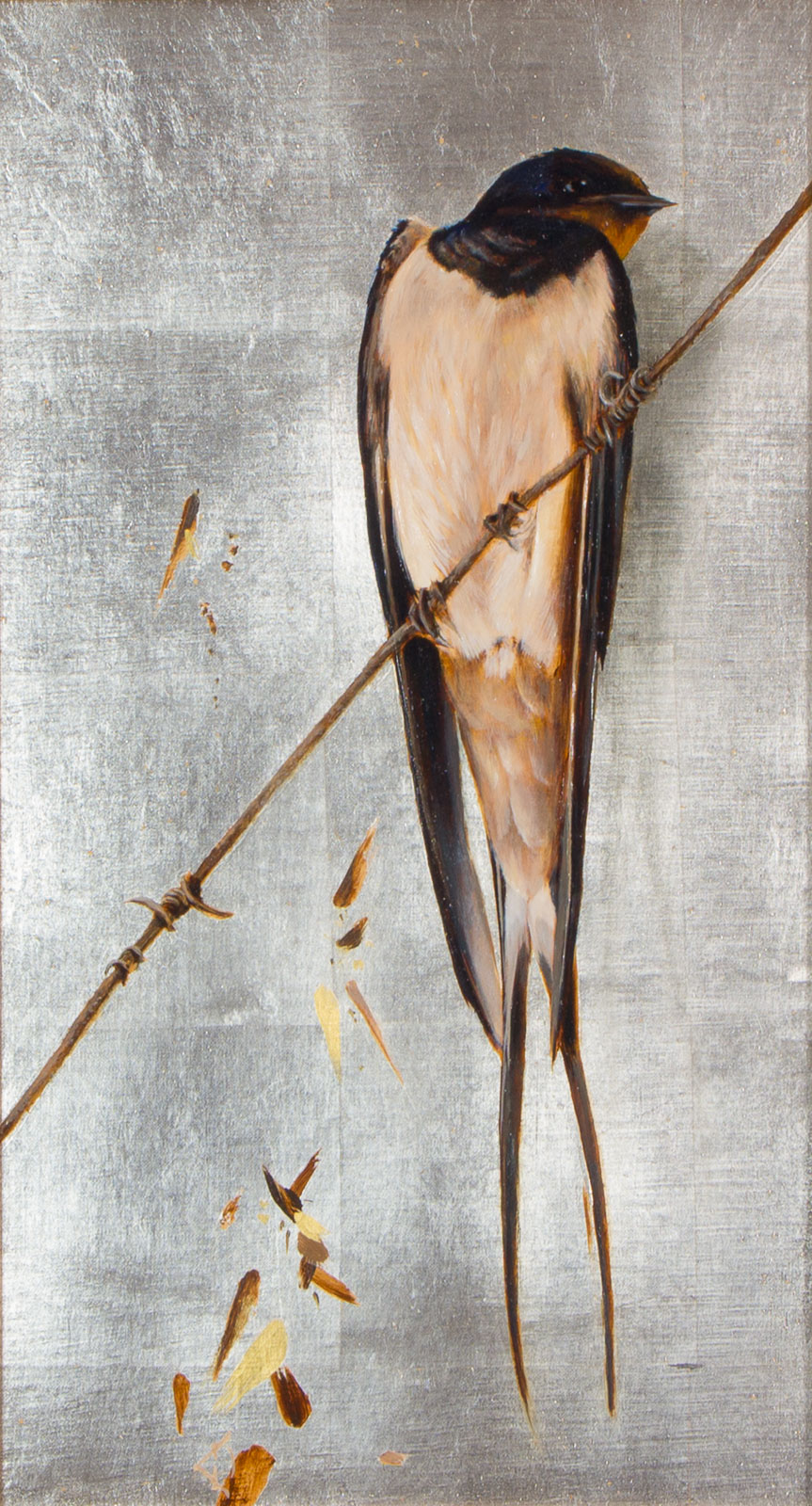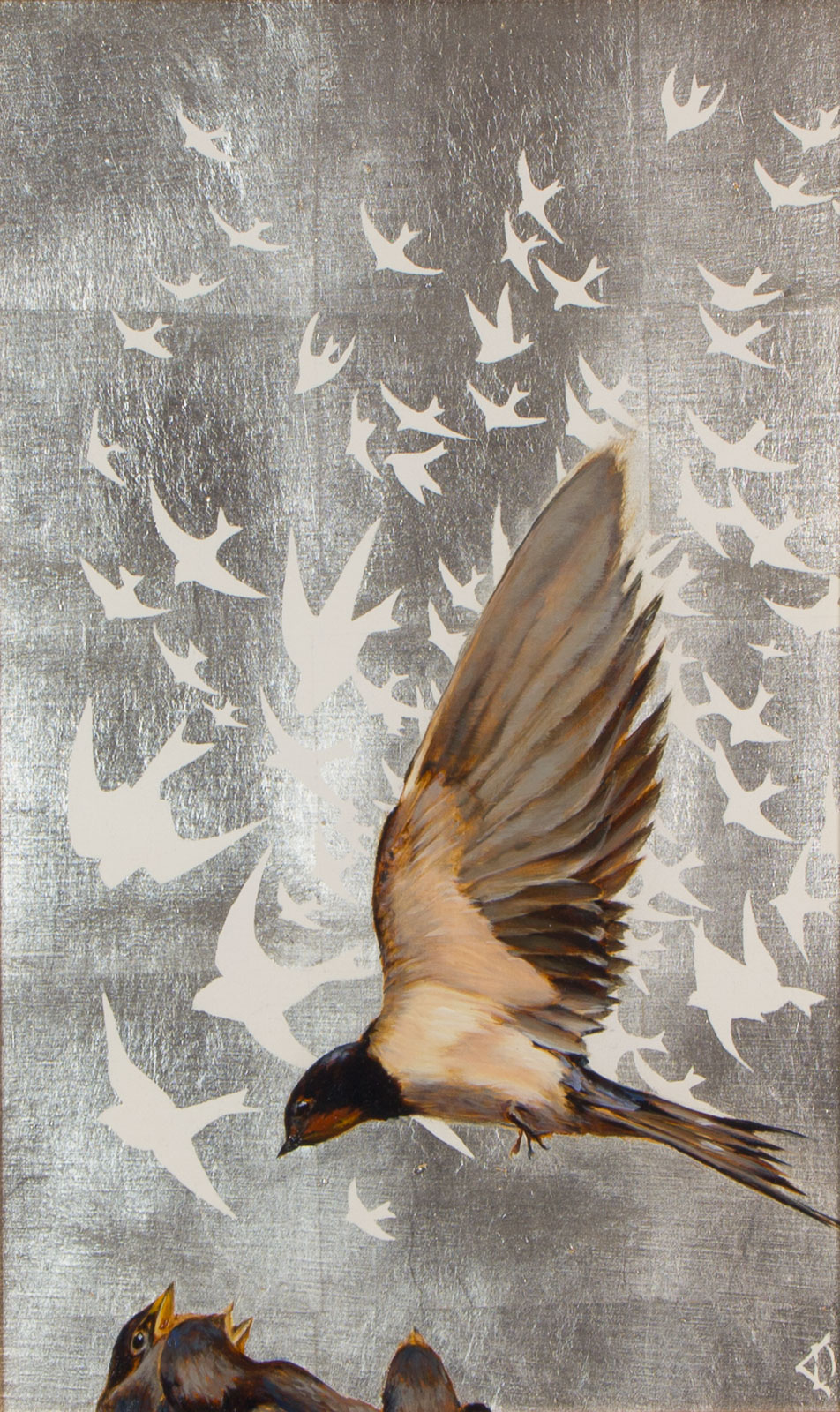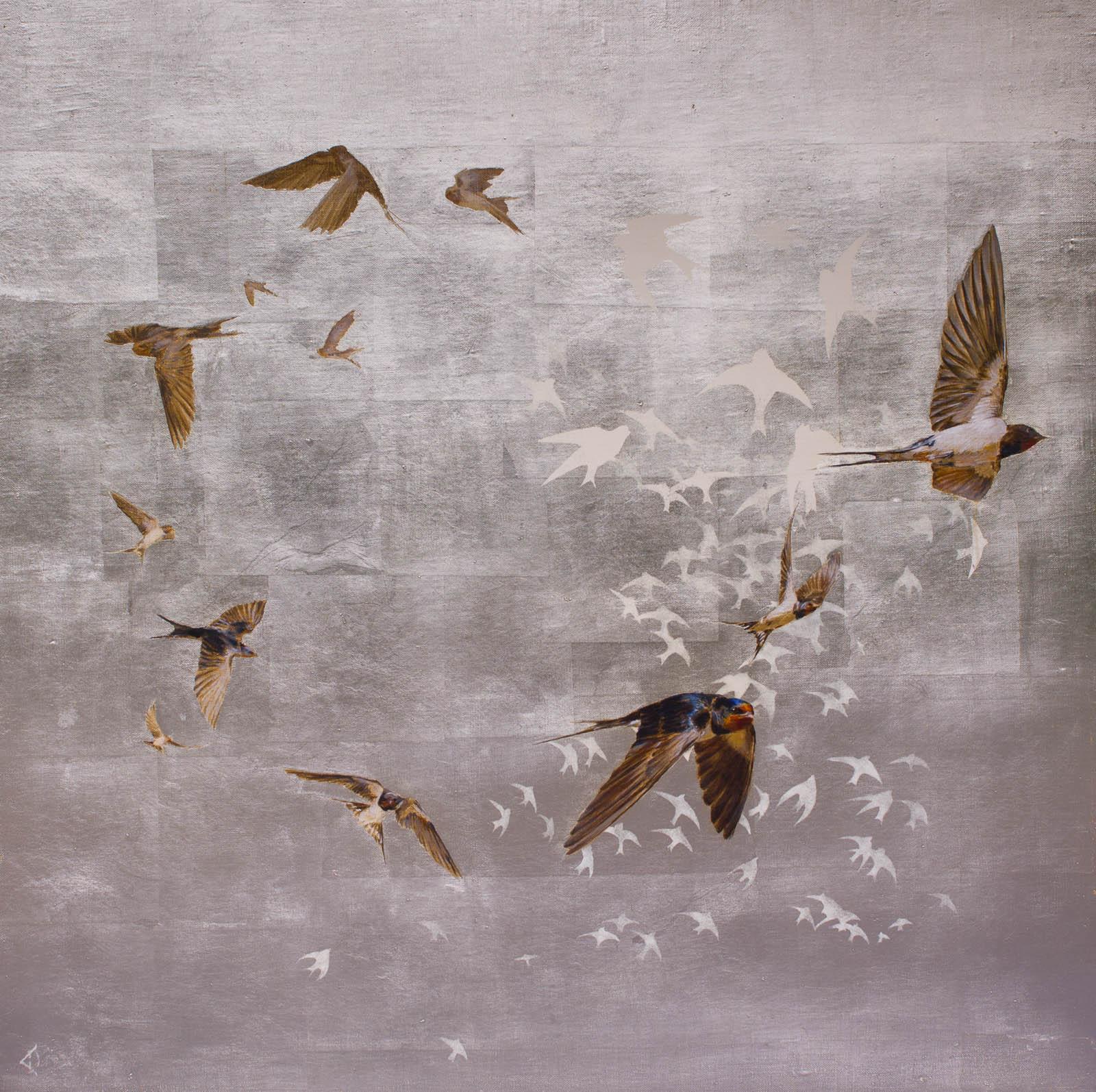Animals
Read more about the inspiration behind my animal paintings:
The concept of metamorphosis has long been a source of fascination for artists throughout history. From the ancient Greeks’ myth of Ovid’s “Metamorphoses” to contemporary art forms, metamorphosis has inspired some of the most innovative and imaginative creations. In mythology, metamorphosis often takes the form of gods and goddesses transforming into animals or inanimate objects. These transformations served to illustrate the power and fluidity of the divine realm and the limitless possibilities of the imagination. It is this transformation from the symbolic to the real that is the subject of Diana’s work.
During the Renaissance, artists began to explore the concept of metamorphosis in their work – Titian being a great example of this, with his many works based on Ovid’s tales hanging in the National Gallery, London. Gilding was also an often used religious technique in pre-Reformation art e.g. the Wilton Diptych at the National Gallery, to name one famous example. Gustav Klimt’s paintings are a more modern example of the technique. On one level the gilded surface of the painting is strikingly different to the surrounding layers of paint – pointing to the drama of what may or may not happen: changes between states of living and dying, the material and the spiritual.
“I use gold and silver leaf in my paintings for two main reasons: firstly it symbolises transformation and reincarnation from it’s origins as meteorites impacting the earth millions of years ago, and secondly it portrays what cannot literally be painted – the sixth sense of spirit and intuition (for me the difference for a hunter or the hunted in matters of life and death). Gold is not a colour as such, as are the other elements of the painting; it is of a different order of existence. The mirror-like reflection on the paint surface changes as the viewer walks round the painting, adding an extra element of interaction with the viewer. The paintings come alive particularly at night in a candlelit room throwing back the viewers presence with wonderful flickering highlights – to the point where the viewer becomes part of the painting.”
— DIANA ARMSTRONG
The pictorial element of gilding links Diana’s paintings to the historical position of viewing animals in the light of ancient sacred traditions. Joseph Campbell in his seminal work ‘ The Way of the Animal Powers’ relates animals to a deeper sub-conscious level, even healing and bringing insight through their stories and energy. Depicted as supreme beasts and mythological and historical symbols, we can see the sacred history of ourselves; our passage through time leading to what Carl Jung called the Archetypes. Nicholas Mann writes in his book ‘The Keltic Power Symbols’:
“The role of the Power Animal has always been to link the human species with the larger collective environment or ecosphere. We are all part of each other. By dreaming of an animal, by performing a ritual, by retelling an ancestral creation myth, the Dreamer, the Shaman, the Bard is working with the essential unity of life, and can journey into the collective spheres of being, through the mediating role of the animal”
— NICHOLAS MANN
Diana’s work strives to find both a balance and tension between the representational and the abstract, the traditional and the contemporary. For Diana, painting wildlife is not an exercise in rendering all the painstaking details. Instead, her work is an ongoing experiment of composition, colour, and technique concerned with a sense of energy and atmosphere found through conveying the elemental forces in the natural world. This leads to an essential balance and tension between the more magical abstract background and the realism of the subject. In a way you could say that she is on the frontier between the figurative and the abstract; the traditional and the modern.
“When I see an animal in the wild I begin by asking myself ‘what is it like to experience the world in your reality?’ This involves both an understanding of the physiology of often short but intense bursts of energy that exists for both the hunter and the hunted as-well as a leap of imagination into the world of myth and the history of the animal . I strive to assimilate that animal energy through the act of painting; to capture some of its essence and so form visual poetry.”
— DIANA ARMSTRONG




